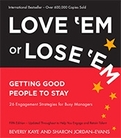BK Blog Post
Five Ways Consultants Do More Damage Than Good
 Posted by
Jeevan Sivasubramaniam,
Vice President, Editorial,
Berrett-Koehler Publishers Inc.
Posted by
Jeevan Sivasubramaniam,
Vice President, Editorial,
Berrett-Koehler Publishers Inc.

|
| Buy Karen's Book Here
|
Karen Phelan's latest book focuses on management consultants and how they can often do more damage than good. --> Bringing in outside consultants can rejuvenate an organization with fresh perspectives, new capabilities, and formerly unthought-of options, but unfortunately many of the large, industrialized consulting practices do just the opposite.
Here are five ways consultants get it wrong :
1. Focusing on delivering those deliverables - “Deliverables” is consultant-speak for the end products, like that binder full of flow charts or the 200-page power point deck, that are contractually required for the huge fees and provide proof of the consultants’ value. Many consultancies obsess over creating deliverables instead of building capabilities. Worse, those documents usually become obsolete shortly after you print them because they’ve been based on….
2. Assuming the world is static - Promising optimized business processes is dependent on a static world. How do you optimize something that is constantly changing? Even those 5-year strategic plans become obsolete before they can be executed. Do you really want to execute a plan based on years-old assumptions? Rather than disseminating knowledge or offering options, many consultants recommend one course of action as the right answer or recipe for success. If the world changes, then that answer is no longer applicable. Unfortunately, many consultants require that one solution for…..
3. Constructing command and control functions - Often, a consulting team will walk into a client site and be appalled by the lack of oversight. How can the executive team be so naively trusting that their employees will do the right things? That prompts a major effort of implementing command and control functions where every employee and every action is monitored and measured, hence stifling innovation, flexibility, and engagement. Many companies fall for this rigid system because the terms “management by objectives” and “performance metrics” have become part of the management theory lexicon. And much of this jargon exists because consultants are so good at ….
4. Propagating management consulting gobbledygook - This takes the form of the indecipherable jargon, a quadrant chart with cute animals, or a formula that calculates shareholder satisfaction. The only thing this gobbledygook succeeds in doing is to distort thinking, either by boiling down complicated human systems to an x-by-y plot or by disguising what is actually happening by calling it something else, ala right sizing. All this gobbledygook is a result of consultants …..
5. Seeking fame and fortune as thought leaders - While consultants are rewarded on client satisfaction, the real money and recognition comes from being a thought leader and creating a trademarked model that brings both royalties and renown. The problem with thought leadership is that it is not usually derived from extensive real-world experiments or years of data gathering. If you call thought leadership what it really is - it’s making stuff up in your head and getting other people to follow it - then it’s obvious that the impressive sounding methodologies only look good on paper. A little raw, perhaps, but there it is. Thoughts?






